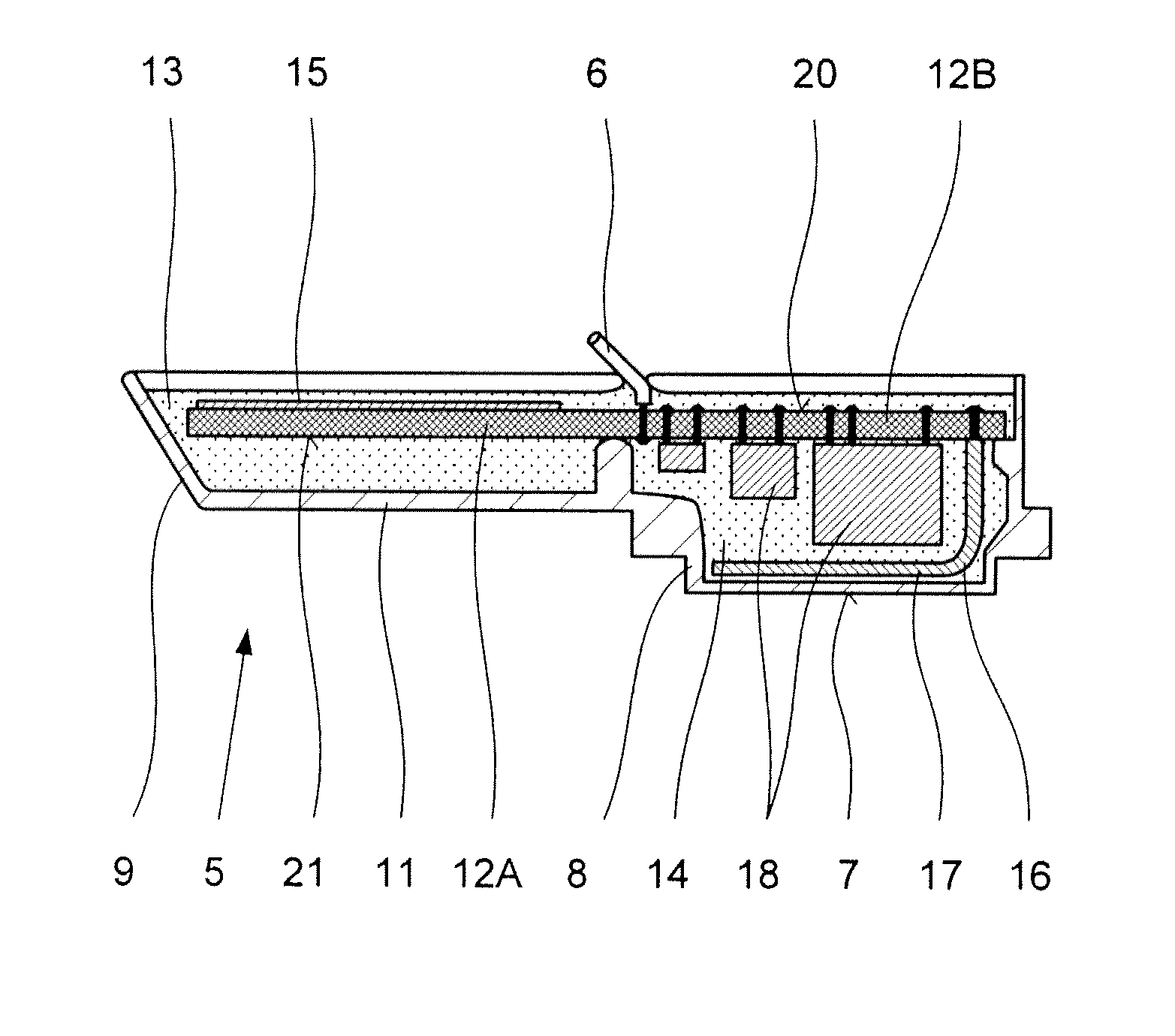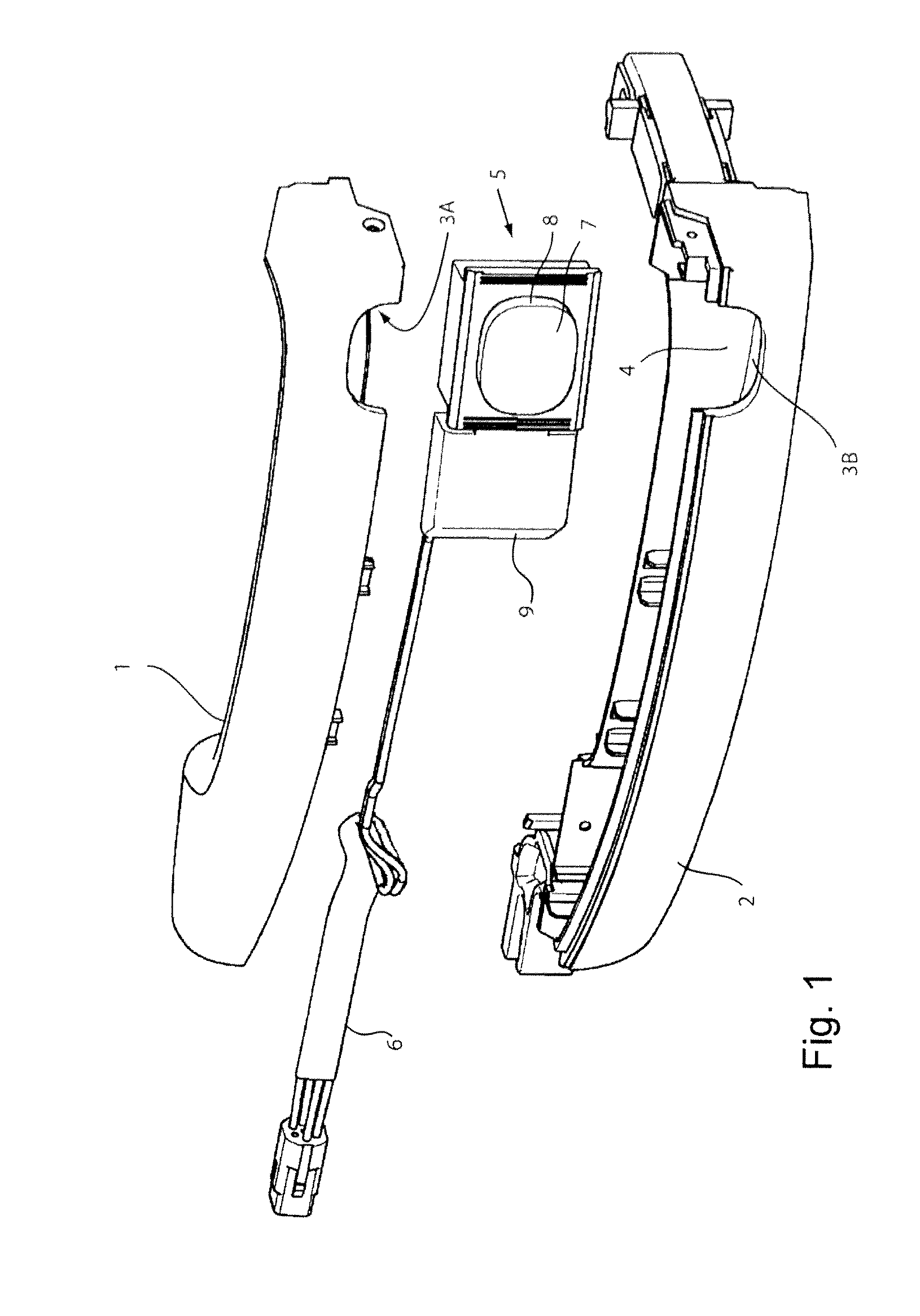Motor vehicle outside door handle with a sensor module
a sensor module and motor vehicle technology, applied in the direction of securing communication, electrical devices, program control, etc., can solve the problems of negative influence on the sensitivity of the sensor, relatively complicated assembly, etc., and achieve the effect of simple production, easy cover and faster performan
- Summary
- Abstract
- Description
- Claims
- Application Information
AI Technical Summary
Benefits of technology
Problems solved by technology
Method used
Image
Examples
Embodiment Construction
[0018]In the preferred exemplary embodiment of the outer motor vehicle door handle in accordance with the invention as shown in FIG. 1, a sensor module 5 is placed within an inner space 4 between two handle halves 1, 2. Input leads 6 which are connected with the sensor module 5 are brought through the inner space 4 within the handle halves 1 and 2 in such a manner that they come out of the handle behind a door wall (not shown in FIG. 1) within the interior of a motor vehicle door. There, the input leads 6 are connected to a power supply and control device (also not shown).
[0019]The sensor module 5 consists of a plastic tub 9 which is open towards a side not visible in FIG. 1, in which a first sensor electrode of a first capacitive sensor (for triggering an unlocking process when detecting the entry of a body part of the operator into an inner space formed between the outer door handle and a door wall), a second sensor electrode of a second capacitive sensor (for triggering a locking...
PUM
 Login to View More
Login to View More Abstract
Description
Claims
Application Information
 Login to View More
Login to View More - R&D
- Intellectual Property
- Life Sciences
- Materials
- Tech Scout
- Unparalleled Data Quality
- Higher Quality Content
- 60% Fewer Hallucinations
Browse by: Latest US Patents, China's latest patents, Technical Efficacy Thesaurus, Application Domain, Technology Topic, Popular Technical Reports.
© 2025 PatSnap. All rights reserved.Legal|Privacy policy|Modern Slavery Act Transparency Statement|Sitemap|About US| Contact US: help@patsnap.com



